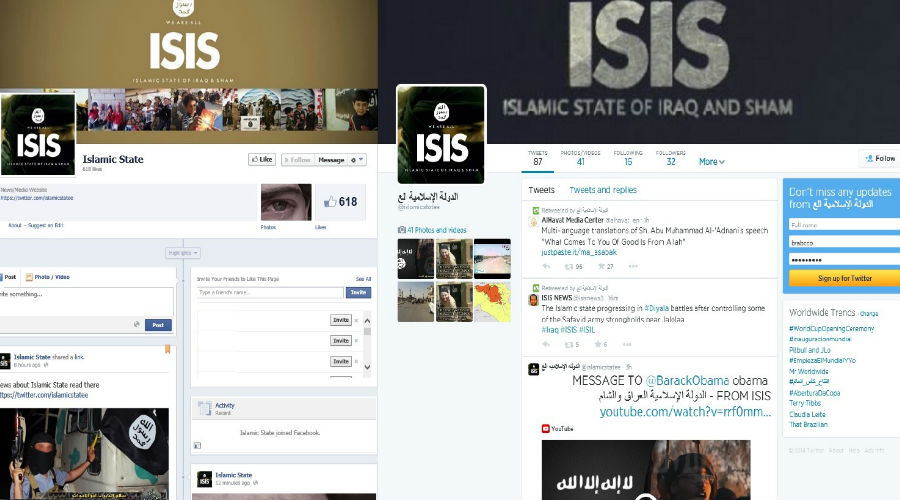Over the past period, ISIS has suffered strong blows in its spheres of influence, which have been severely diminished after the loss of physical and infrastructural assets, on which it relied to support its extension and control of many cities in Syria, Iraq and Libya. This coincides with the growing impact of internal vulnerability factors, the most prominent of which is the increasing defections in its cadres and members.
However, this does not negate the fact that ISIS is currently trying to regain its influence and activities, especially in the media landscape, albeit through modest capabilities compared to the “media glare” that accompanied the advent and ascent of the organization beginning in 2014.
Indicators for retreat
Several media reports have monitored the decline in ISIS’s activities, revealing that the most important indicators are linked to the shift in rhetoric for its supporters and audiences, from discussing on social media the efforts of state building, construction and facilitation of livelihoods in its spheres of influence and control, to a focus on its battles with the international coalition and other forces opposing it, along with punitive measures taken against those who attempt to defect or whom it accuses of spying for other parties.
Although ISIS’ media presence has clearly receded in 2017, the decline in the quantitative media content was not the only indicator. There was a significant drop in the impact of the techniques and quality of the audio and video products, after the organization in Iraq and Syria lost most of its media infrastructure, in addition to the killing and detention of some of its media cadres, in the aftermath of targeting its media facilities and headquarters by Iraqi forces, international coalition and some other parties. The loss of Raqqa, in October 2017, marked a watershed in ISIS’s media retreat, where Raqqa was the main headquarters of its key media organizations.
Strikingly, ISIS was keen to keep its attempts, to return to its spheres of influence, away from the media buzz it had previously practiced. The reason for this is its dwindling media capabilities on the one hand, and its focus on the goal of return without squandering efforts on the other hand. This is evident in its terrorist operation in Mosul on 24 March 2018, which left several people dead from the Iraqi army, police soldiers and members of the Popular Mobilization militia. ISIS did not provide documentation for this operation as it previously used to do; the leaked footage of the operation on social media was taken by some Iraqi soldiers, before being banned from circulation, following the warning of Iraqi Prime Minister Haidar Abadi to local media against publishing such footage “which could set Iraq back to pre-liberation phase from the grip of ISIS”.
Gradual comeback
ISIS has employed two main mechanisms to restore its media presence:
1- Relying on social media: Since its rise, ISIS has been working to employ social media to support its media publicity, by publishing its own videos on the accounts of its members and supporters, but its inability to produce new information materials during the past period led to a drop in the circulation of media materials on such websites. However, other activities on these websites has gone uninterrupted, which are mobilization and recruitment.
Numerous reports indicate that some social media outlets have been transformed into mechanisms exploited by terrorist organizations to communicate with terrorists and sympathizers, helping the latter to attract a large number of them and compensate for their human losses due to the multiple confrontations in ISIS-held areas.
2- Reconstructing ISIS' image: Success of anti-ISIS forces forced the organization out of the most important and larger areas under its control in both Iraq and Syria, and hence dropping its mental image which it has keen to draw in mind, especially after resorting to a change in the public discourse directed to its members and supporters, its call for its members to show “patience” and “steadiness” while responding to the successive blows in those areas. This discourse has led, according to several reports, to a decline in the number of its supporters and the flight of some of its members.
Against this backdrop, ISIS is currently trying to make use of its remaining media on the ground, particularly in Hasakah, Deir Ezzor and Hama, where it has deliberately documented several reprisals against the Syrian army. The most recent of such operations was reported by the international media in May 2018, after it was first published by the Daily Mail where ISIS turned a prisoner of the Syrian army into an airborne bomb and let him explode, which is tantamount to a return to its former “systematic intimidation” method. This comes after ISIS has adopted- over the past period- the “lone-wolves” tactic and recruiting members to carry out individual operations in several Western cities, and merely declaring responsibility for it, or leaving evidence of its involvement.
In conclusion, it can be argued that ISIS’ attempts to bolster its media presence and have the same previous momentum hinge primarily on its ability to regain its positions and to operate on the ground, through restoring some of the liberated areas or controlling the areas to which its members have fled. International reports and studies do not rule out such moves and indicate that ISIS is trying to exploit the differences among its rivals and their preoccupation with ancillary battles in both Iraq and Syria. while working to form sleeper cells able to resume activities in favorable conditions, with all the repercussions that this may have on the security and stability of ISIS- ridden countries.


